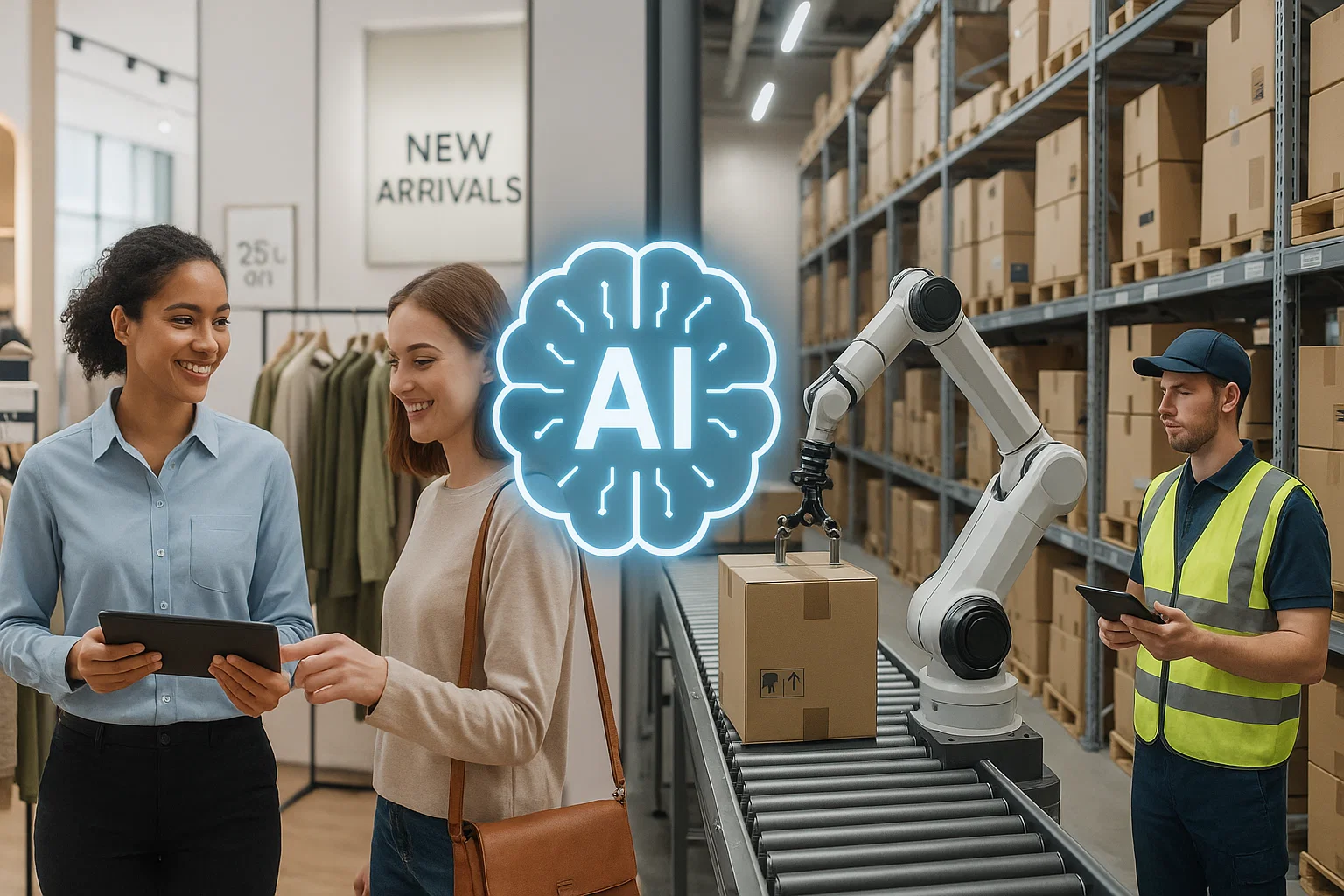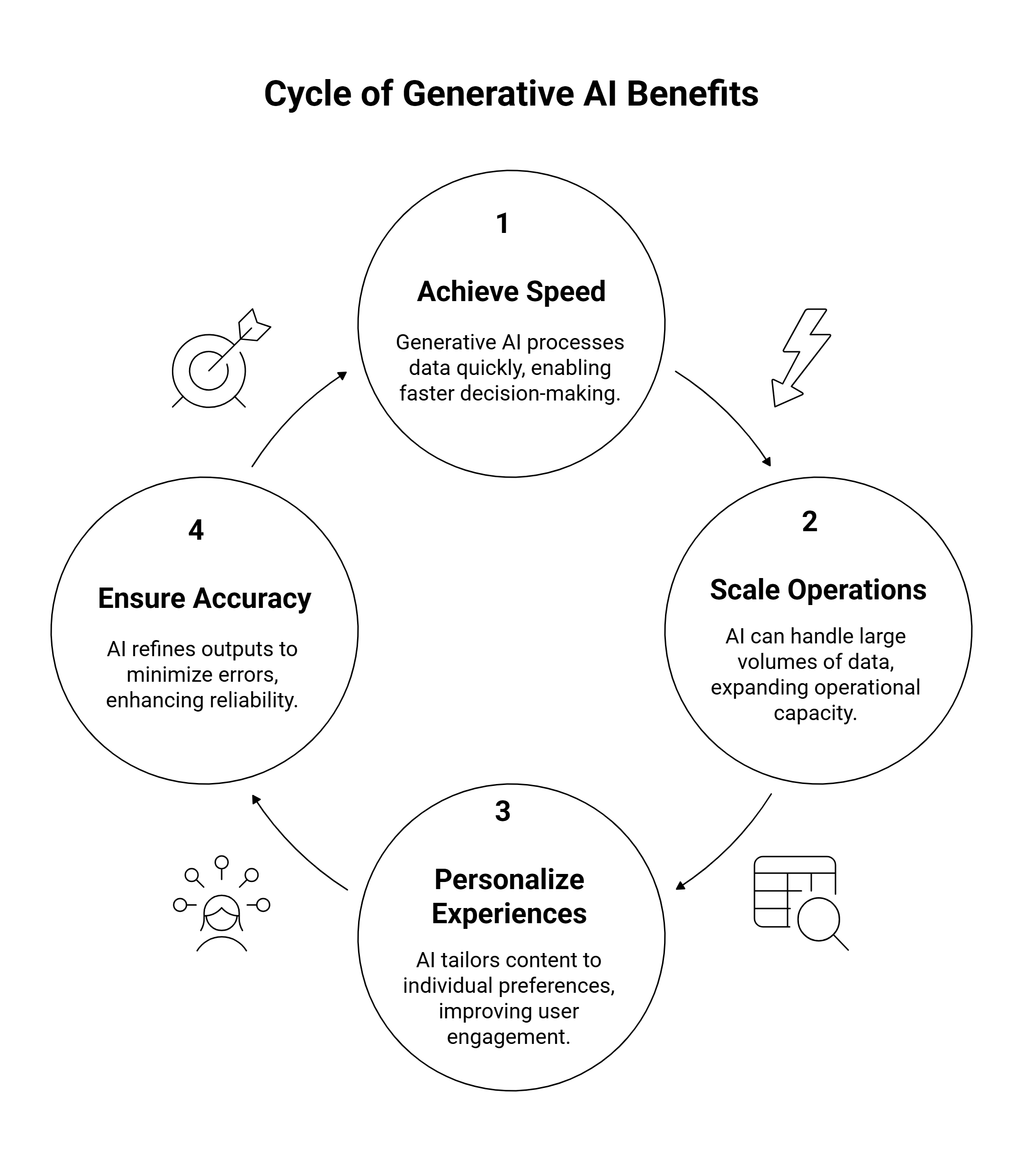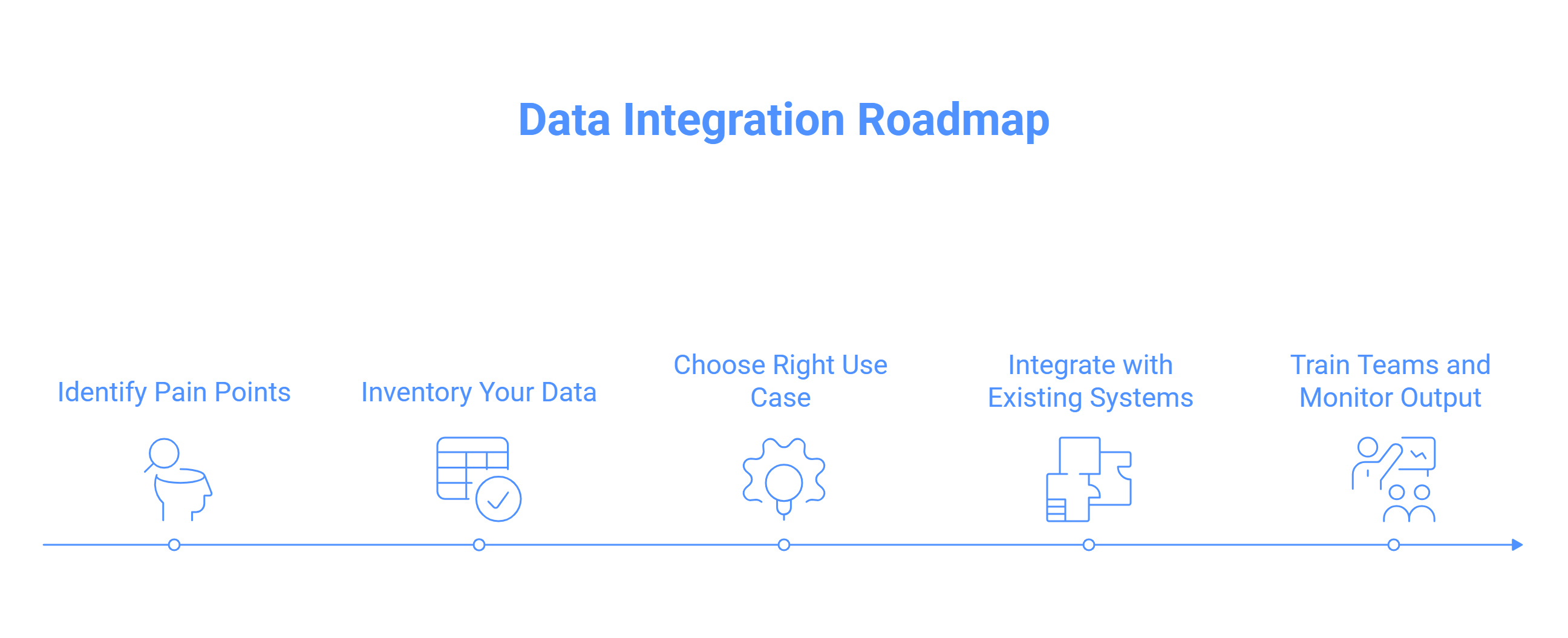Revolutionizing Retail: How Powerful Generative AI in eCommerce Enhances the Shopping Experience


Retail has always been a balancing act—keeping shelves stocked without overfilling, predicting trends before they peak, and delivering experiences that feel both personal and scalable. But now, the stakes are higher. Customer expectations are instant. Supply chains are volatile. Margins are razor-thin.
Enter Retail Automation powered by Gen AI—a revolution that’s cutting through the noise. This isn’t just about chatbots or smart shelves. Gen AI in retail is reengineering how everything works, from marketing and merchandising to logistics and replenishment. It’s fast, predictive, adaptive—and it’s changing the rules of competition.
This article breaks down how Generative AI is powering this transformation across the entire retail ecosystem, from storefront to supply chain, with clear, actionable insights and a look at what’s next.
Generative AI is a subset of artificial intelligence that goes beyond recognizing patterns—it creates new outputs. Whether it’s generating product descriptions, drafting marketing emails, forecasting inventory needs, or simulating supply chain disruptions, Gen AI can produce highly relevant content, predictions, or plans based on the data it consumes.
For retail, this is a game-changer.
Unlike traditional automation tools that require pre-coded rules, Generative AI in retail adapts in real-time. It can understand context, react to changes in customer behavior, and dynamically adjust decisions based on millions of data points.
Here’s why that matters:

In a world where trends shift overnight and loyalty is fleeting, Gen AI gives retailers the tools to stay ahead—by thinking, reacting, and even creating like a human, but at the scale of a machine.
Retailers have tried for years to personalize shopping experiences, but Gen AI brings true individualization. It doesn’t just suggest items based on similar purchases—it generates real-time product suggestions that reflect style, context, even mood.
By analyzing customer behavior, historical data, weather, seasonality, and even time of day, Generative AI in retail can dynamically generate the most relevant offers and product recommendations. That means fewer missed opportunities and a better chance of conversion—whether online or in-store.
In physical stores, Gen AI drives Retail Automation by auto-generating display layouts that align with local trends, foot traffic, and real-time inventory levels. Digital signage powered by Gen AI adapts on the fly—showcasing different promotions at lunch versus dinner, or featuring raincoats during a storm.
Online, it auto-generates homepage banners, featured collections, and navigation options optimized for different user segments. No need for constant manual updates—Gen AI adjusts layouts and visuals based on performance data.
AI chatbots are no longer robotic script-followers. Gen AI–powered assistants engage customers with natural, context-aware conversation. They don’t just answer basic questions—they guide users to complete purchases, offer style advice, explain return policies, and even provide emotional support during complaints.
In-store, tablet-based or kiosk-based AI assistants enhance the shopping experience by helping customers locate items, check availability, or make recommendations based on their needs—all through voice or typed conversation.
Retailers no longer need to manually write thousands of product descriptions or ad copies. Gen AI can generate:
Each piece is tailored to tone, audience, and platform—at scale. This dramatically cuts down content production time while ensuring consistency across channels.
Managing stock levels has always been tough. Overstock means discounts and waste; understock means lost sales and disappointed customers.
Retail Automation through Gen AI transforms inventory planning. It analyzes point-of-sale data, weather forecasts, holidays, local events, promotions, and even social media trends to generate demand forecasts with high accuracy. Unlike rule-based systems, it adapts continuously—learning from every cycle to refine its predictions.
The result? Just-in-time ordering, minimal waste, and maximized shelf availability.
Gen AI enables auto-generation of purchase orders based on real-time needs. It considers not just what’s selling, but also supplier lead times, logistics capacity, and historical delays. Instead of waiting for a manual reorder point, the system anticipates when stock needs to be replenished—and generates procurement tasks instantly.
Retailers can also train Gen AI models to negotiate terms or suggest alternate suppliers when shortages occur. It’s not just automation—it’s intelligent delegation.
Delivering products efficiently requires precise planning. Gen AI automates route planning for deliveries, factoring in traffic, fuel prices, weather, and vehicle availability. For larger retailers with multi-region networks, this means real-time routing suggestions that cut shipping time and cost.
Warehouses benefit too. Gen AI can auto-generate picking lists, direct autonomous robots, and schedule shifts based on demand forecasts.
What happens if a supplier fails or a route becomes blocked? Gen AI can simulate potential disruptions and pre-generate contingency plans. It maps risk scenarios using diverse data inputs—from geopolitical alerts to shipment scans—and proposes alternatives instantly.
This level of foresight was once exclusive to enterprise-scale firms. Now, Gen AI makes it accessible to retailers of all sizes.
Step 1: Identify the Pain Points
Don’t start with the technology. Start with the problems. Is your team overwhelmed creating content? Are stockouts hurting your margins? Do customers abandon carts too often? Define your most urgent bottlenecks and opportunities.
Step 2: Inventory Your Data
Gen AI runs on data. Assess what you have:
Ensure data is clean, structured, and accessible. Missing data doesn’t disqualify you—many models can work with gaps—but the more complete your inputs, the more accurate your outputs.
Step 3: Choose the Right Use Case to Pilot
Pick a high-impact, low-complexity use case. Good starting points include:
These can be implemented quickly and deliver fast ROI.
Step 4: Integrate with Existing Systems
Work with vendors that offer easy API integration or out-of-the-box connectors for your e-commerce platform, POS system, or ERP. Avoid solutions that require rebuilding your entire tech stack.
Step 5: Train Teams and Monitor Output
AI is a co-pilot, not a replacement. Train staff to work alongside Gen AI tools—curating outputs, giving feedback, and focusing on strategy. Monitor performance regularly and refine your models as needed.

Key Benefits
Core Challenges
Success lies in planning: smart strategy, clean data, and the right mix of tech and human oversight.
The current wave of Retail Automation is just the beginning. As Generative AI in retail matures, expect more innovation:
Retailers who adopt early won’t just survive—they’ll lead. Gen AI is not a temporary trend; it’s the new operating system of retail.
From the first click or footstep to the final delivery, Retail Automation powered by Generative AI is unlocking new levels of intelligence, agility, and personalization. It helps retailers forecast smarter, serve faster, and operate leaner. The businesses that embrace Generative AI in retail today are setting themselves up not just for growth—but for resilience in an unpredictable market.
Retail is changing fast. Gen AI ensures you’re not just reacting—but staying ahead of the curve.
Ready to transform your ecommerce brand into an AI-powered growth engine?
Connect with RBM Soft today and discover how we can bring your Generative AI vision to life.